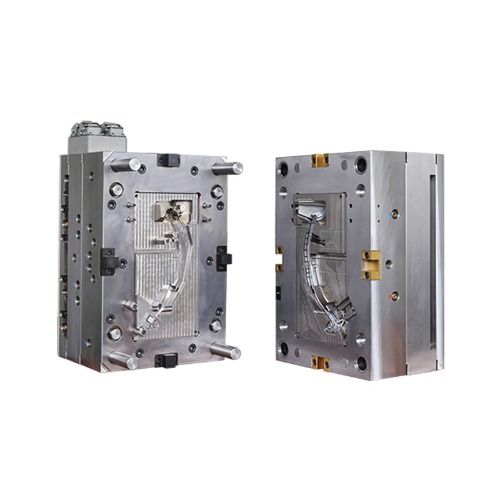Automotive parts molds can be classified based on various factors such as the type of part being produced, the molding process used, and the complexity of the mold design. Here are some common classifications of automotive parts molds:
Type of Part:
Exterior Parts Molds: These molds are used to produce exterior components of a vehicle, such as bumpers, fenders, hoods, and side panels.
Interior Parts Molds: These molds are used to produce interior components of a vehicle, such as dashboard panels, door trims, center consoles, and seat components.
Engine Parts Molds: These molds are used to produce engine components, such as cylinder heads, intake manifolds, engine covers, and fuel system parts.
Electrical Parts Molds: These molds are used to produce electrical components, such as connectors, sensors, switches, and wiring harnesses.
Structural Parts Molds: These molds are used to produce structural components, such as chassis parts, frame components, and structural reinforcements.
Molding Process:
Injection Molds: Injection molds are the most common type of mold used for automotive parts production. They involve injecting molten material (usually plastic) into a mold cavity under high pressure.
Compression Molds: Compression molds are used for parts that require a high degree of dimensional accuracy. The material is placed into a mold cavity, and heat and pressure are applied to shape and cure the part.
Blow Molds: Blow molds are used for parts that have a hollow or tubular shape, such as air ducts, hoses, and fluid reservoirs. The material is extruded or injected into a mold, and then air pressure is applied to expand and shape it.
Thermoforming Molds: Thermoforming molds are used for parts that are made by heating a thermoplastic sheet and then shaping it over a mold using vacuum or pressure.
Complexity of Mold Design:
Simple Molds: These molds have relatively simple designs and are used for producing straightforward automotive parts with minimal complexity.
Complex Molds: These molds have intricate designs and are used for producing complex automotive parts with features such as undercuts, multiple sliders, and intricate shapes.
Material Used:
Plastic Molds: These molds are used for producing automotive parts made from various types of plastics, including ABS, polypropylene, polycarbonate, and more.
Metal Molds: These molds are used for producing automotive parts made from metal materials, such as aluminum, magnesium, or steel.
Meanwhile,here are some common applications of automotive parts molds:
Exterior Components: Automotive parts molds are used to produce a wide range of exterior components, including bumpers, fenders, hoods, grilles, side panels, doors, and roof panels. These molds enable the precise shaping and forming of these parts, ensuring consistent dimensions and quality.
Interior Components: Molds are used to manufacture various interior components of vehicles, such as dashboard panels, door trims, center consoles, seats, armrests, steering wheels, and instrument clusters. These molds help create the desired shapes, textures, and finishes of interior parts to meet aesthetic and functional requirements.
Lighting Systems: Molds are used for producing automotive lighting components, including headlamp housings, tail lamp lenses, turn signal lenses, fog lamp housings, and other lighting system parts. These molds ensure accurate shaping and optical clarity of the lenses and housing, allowing for proper light distribution and visibility.
Engine Components: Molds are utilized to manufacture engine parts, such as intake manifolds, cylinder heads, engine covers, oil pans, and various other components. These molds enable the production of precise and durable engine parts that meet strict performance and tolerance requirements.
Electrical Components: Automotive parts molds are used to produce electrical components and connectors, including wiring harnesses, sensor housings, fuse boxes, control units, and switches. These molds ensure the proper formation of intricate shapes and the integration of electrical connectors and terminals.
HVAC System Components: Molds are employed in the production of heating, ventilation, and air conditioning (HVAC) system components such as air ducts, vents, HVAC control panels, and blower housings. These molds enable the creation of complex ducting shapes and precise fitting of HVAC components.
Chassis and Suspension Parts: Molds are used to manufacture chassis and suspension components, including frame components, brackets, control arms, suspension bushings, and sway bars. These molds ensure the production of structurally sound and precise parts for vehicle stability and performance.
Fluid System Components: Molds are used for producing various fluid system components, such as fuel tanks, coolant reservoirs, brake fluid reservoirs, and oil filter housings. These molds enable the creation of leak-proof and durable parts that are vital for the proper functioning of fluid systems in vehicles.





 English
English Español
Español










